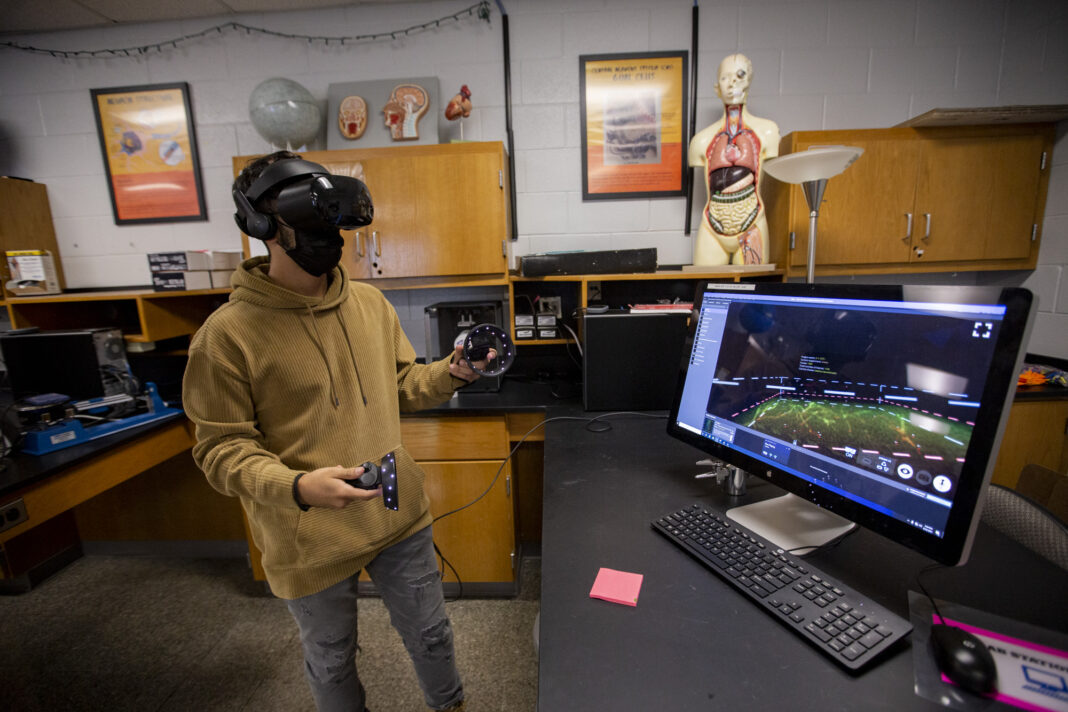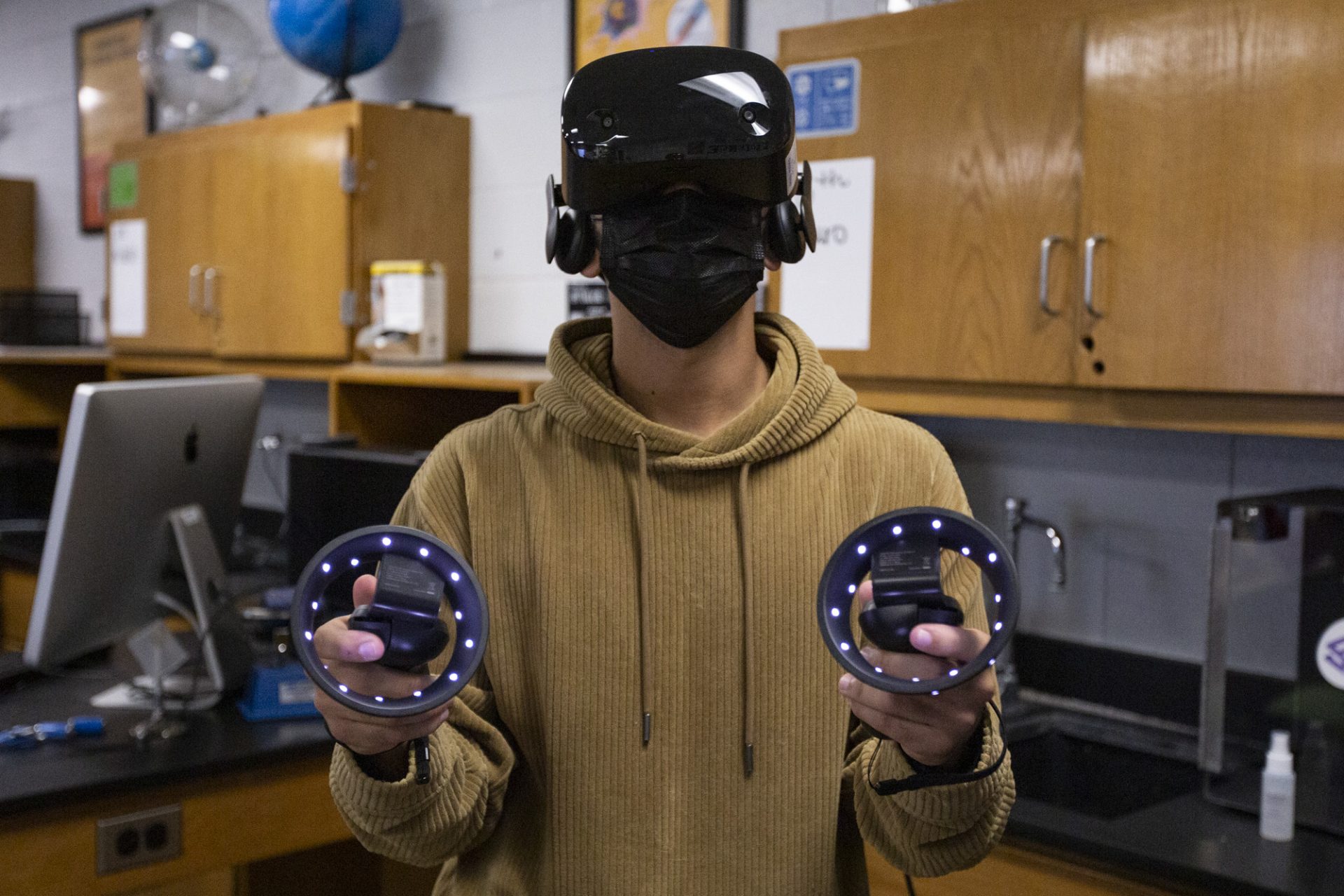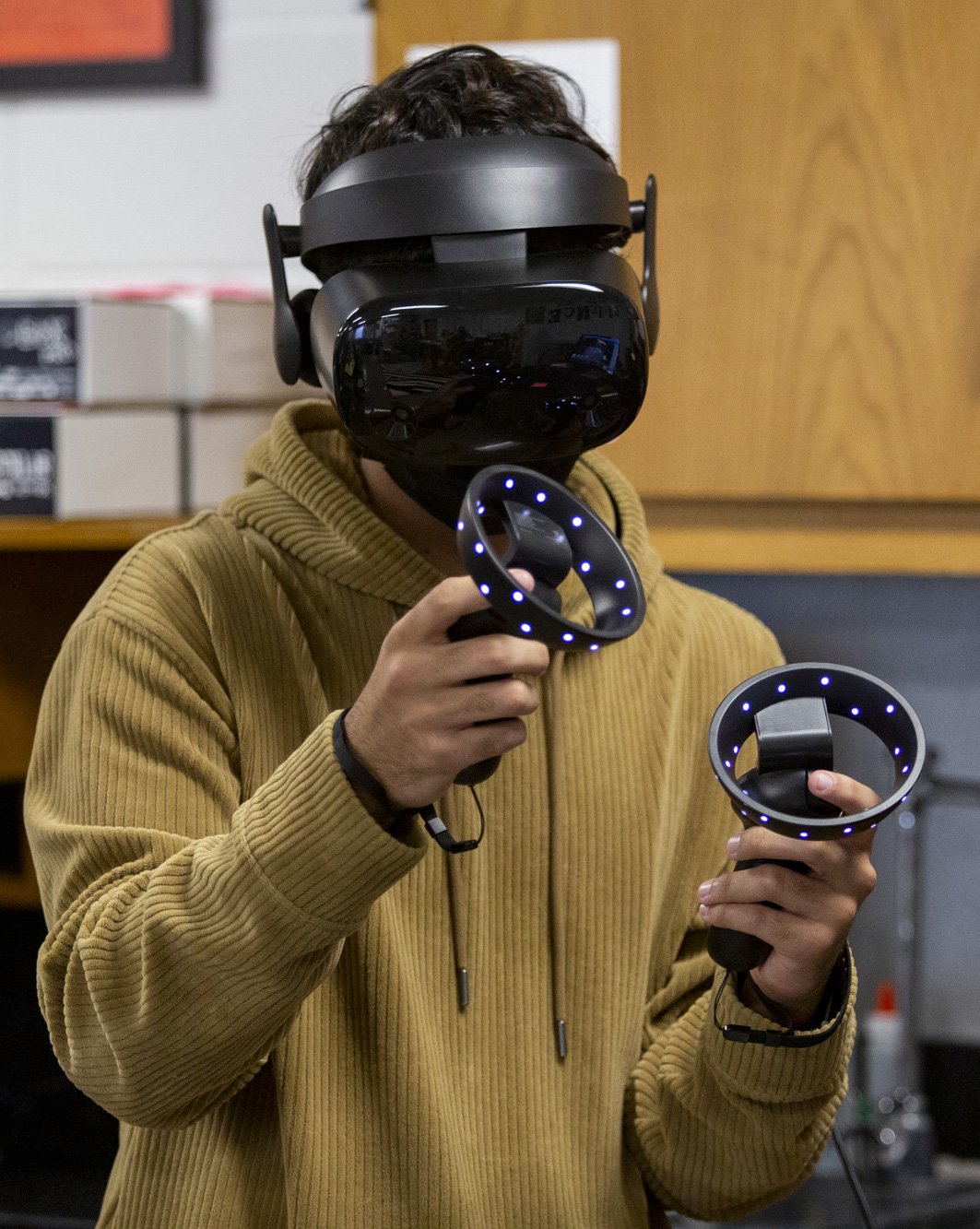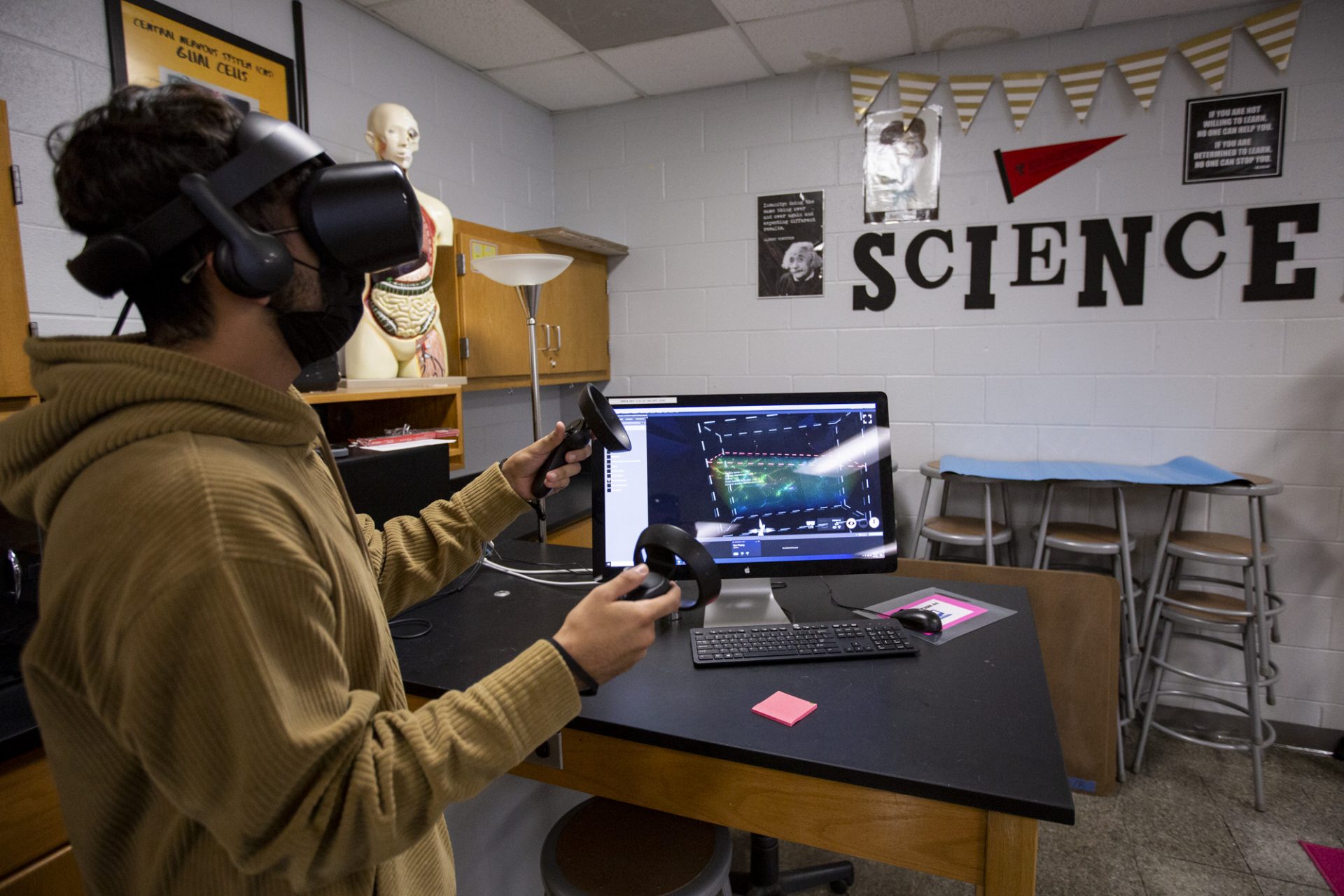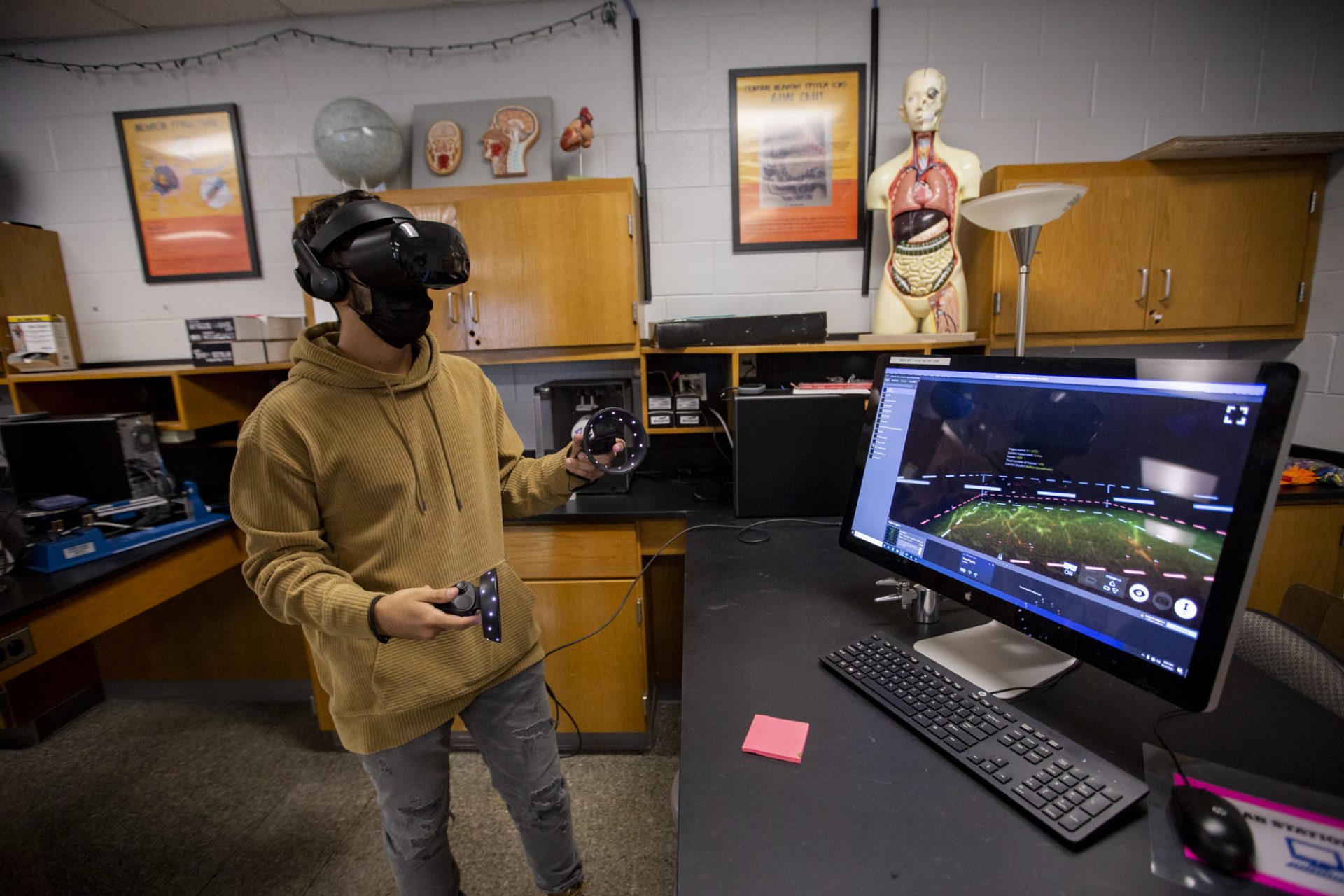George H.W. Bush New Tech Odessa students in Bernadette Barragan’s neuroscience class have gotten up close and personal with fly brains this year through virtual reality.
The course, Neuroscience Research and Design, has 46 students this year.
“That’s double the amount of students that we had last year, so it grew. It’s growing,” Barragan said.
The virtual reality component is what has helped bring in students.
They had received some new VR components on a recent Thursday, but only one student at a time can use a headset. Usually, she said students will partner so one can help navigate the other through the brain.
“It’s a lot of data to look at … When you’re in VR, it’s a totally different view,” she said.
Barragan, George H.W. Bush New Tech Odessa, ECISD Chief Innovation Officer Jason Osborne and Innovation Department staff member Kristin Whittenburg were recently accepted to a peer reviewed publication by the Society of Neuroscience (International) and Cold Spring Harbor in Long Island.
Barragan said she was excited about the publication and hoped it would push neuroscience research forward.
“… Because that was the whole point behind it is let’s just show people that high school students can do this, even elementary students, junior high students can do this,” she said.
She added that NTO is one of the only high schools in the country that she knows of that has a neuroscience course.
“So it’s gaining attention,” Barragan said.
She added that several new university and scientific partnerships have been formed and the ones from last year are returning.
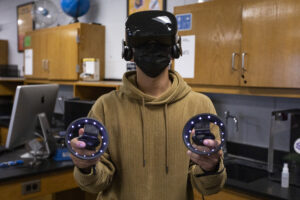
Although somewhat limited because of virtual learning last year, the students were able to work on their research at home on their computers.
Osborne also mentioned internships that students will be doing with universities on neuroscience.
Starting in October, she said, 10 students will be doing virtual reality with syGlass and South Florida University.
“… That research project is using the data for the mouse brain, so they’re looking at the brain of a mouse in virtual reality. But they’re starting that internship Oct. 1 and I have 10 students” that are going to meet with those scientists every Friday, she said.
“They attend the lectures in a VR room in real time and they actually have avatars now. The little avatars are sitting around a table. It’s just like you’re attending a live lecture. They can interact, ask questions, see the data in the middle of the room. It’s amazing. So they’ve been practicing. They all created their own avatar the last couple of weeks and they’ve already been in the virtual reality rooms so they could see their own avatars and they had a blast doing that,” Barragan said.
She acknowledged that this is the wave of the future. Barragan is teaching a couple of sections of freshman biology and they’re already curious about virtual reality.
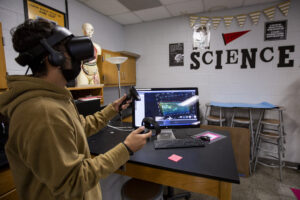
Part of the students’ capstone project at the end of the year is to try and figure out what the future will be, so they are coming up with real-world questions to promote more research for the future.
“They’re designing the course along with learning in this course,” Barragan said.
One of the things they talk about is that one in five people in the world have some kind of neurological disorder and there are no cures.
“We definitely want to push the research, so I love giving them the opportunity to explore and create the questions. They all have some personal tie to somebody who has it. It could even be themselves who have some kind of neurological disorder. It is a very personal class because they all know Alzheimer’s, dementia. These are all things that are common and we have no cures for them. … The agency behind their learning here is unreal,” Barragan said.
Kali Avila, an 18-year-old senior, said she was already interested in chemistry. She finds it interesting to be working hand in hand with scientists.
Now, “I’m finding so much interest in studying the brain and how it works. I’m trying to research more … and how I can incorporate that in actual study later on in my life,” Avila said.
Madison Houston, a 17-year-old senior, said she wants to go into criminal psychology. She said it will enable her to see how other people think,” Houston said.

